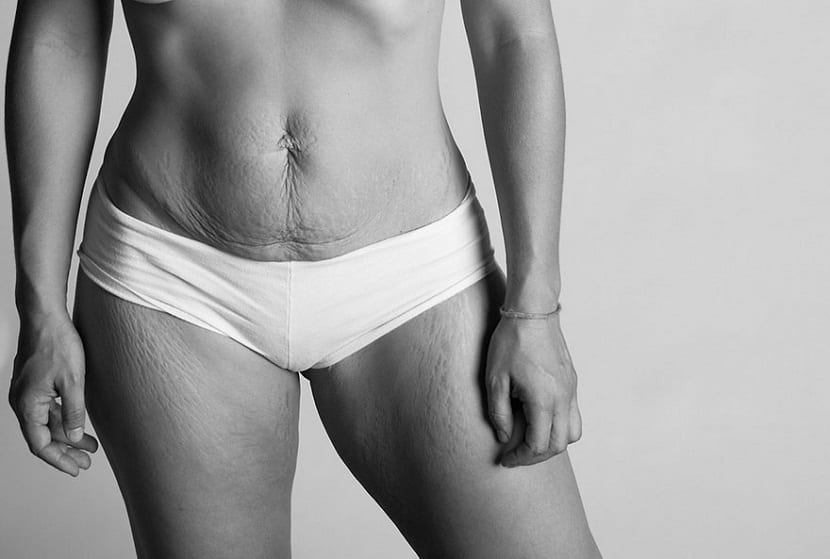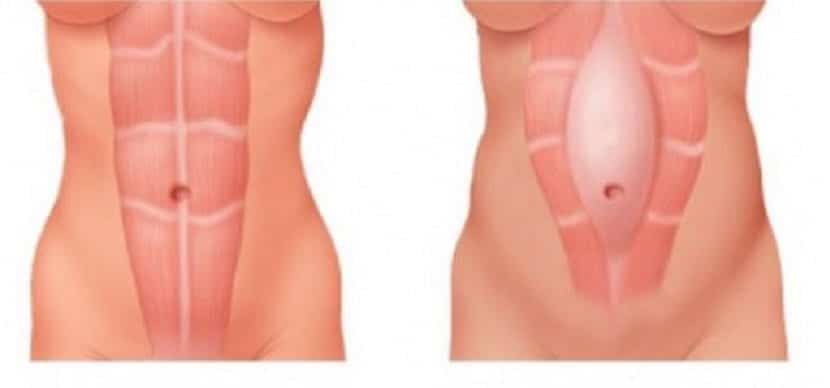
If you have recently become a mother or are about to become one, you may be worried about your weight gain and the physical changes you have gone through. One of the parts of the woman's body, which the womb suffers the most with pregnancy.
During the 9 months that the pregnancy lasts in the woman, the belly expands leaving room for the new life, can grow and develop, until it is ready to be born. But for this to happen, a series of physical changes must occur.
The abdomen grows and in turn the skin, muscles and fibers expand that cover them. One of the consequences of this increase is abdominal distention or diastasis recti.
What is abdominal distention or diastasis recti
In the abdomen are the muscles called rectus, are located on both sides of the abdomen. The rectus muscles are united by a fiber tissue, which is made up of collagen.

During pregnancy, with the consequent weight gain, these fibrous muscles are stretched and damaged. As a consequence, these tissues lose firmness and the rectus muscles are separated from each other. This is called abdominal diastasis or diastasis recti.
Abdominal diastasis is associated with pregnancy, because it is a situation where women usually gain weight in a short period of time. But it is not a consequence of pregnancy In itself, it can also be suffered by men and women who gain weight very quickly.
Consequences of abdominal distention
The most obvious consequence for people with abdominal diastasis is that the belly is flabby. Muscles cannot do their job to hold tissues together, so excess skin and fat are left hanging.
Aesthetically, it can be the cause of an insecurity problem for those who suffer from it. But in addition to the physical consequences, abdominal diastasis can lead to other types of problems, including: a major pelvic floor disorder.
After delivery it is important to worry about a good pelvic floor recovery. This area is greatly affected by all the weight that it will bear throughout the pregnancy. In addition to the important work that you will have to do during delivery.
If you suffer from an abdominal diastasis, the recovery of the pelvic floor will also be affected, and may having urinary incontinence and pelvic pain.
How to treat abdominal diastasis
Really once strain occurs, it is very difficult for the muscles and fibers that hold them together to fully recover. In some very extreme cases, surgery can be used, but there are also others treatments and exercises you can do to improve its appearance.
- Hypopressive exercises
This technique is really suitable for women who have given birth. You can do some simple exercises yourself. But if your doctor has diagnosed you with abdominal diastasis, it is preferable that count on the help of a specialist.

To avoid further damage go to a professional, who can teach you the most recommended exercises for your specific case. What if you should not do are traditional sit-ups, they can damage the pelvic floor even more.
- Take care of your diet
It is essential that you maintain a healthy and balanced diet, with foods rich in fiber to maintain a correct transit intestinal. Constipation does not favor the situation of a damaged pelvic floor.
- Specific girdles
In the market you can find girdles that are especially indicated for cases of abdominal diastasis. But if you are going to use it, it is preferable that first check with your doctor. It is not advisable to wear a girdle for a very long time.
Therefore, first consult with your specialist and find the girdle that best suits your needs. What's more you will have some recommendations to use it Safely.
- Aesthetic treatments
You can also find treatments in the cabin that help you improve the appearance of your abdomen. Among them you can look for the electrostimulation or specific physiotherapy for these cases.
Above all, you should be aware that if you suffer from abdominal diastasis, you may not fully recover again. You should not obsess over this problem, follow the medical recommendations and exercises that we have mentioned. But above all, do not stop enjoying your motherhood.